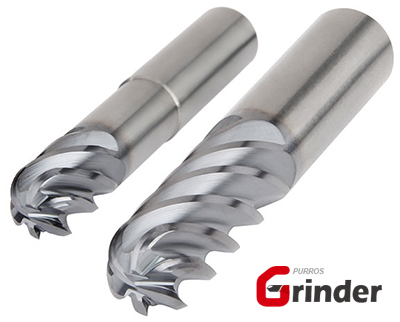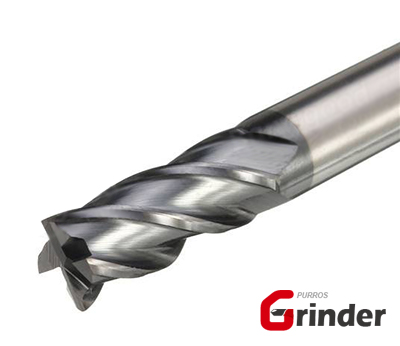Ball End Mill Machining: The cutter teeth that are distributed on the circumference surface of cutter bit are used to mill the workpiece.
End Mill Machining: The cutter teeth that are distributed on the cylindrical surface of cutter bit are used to mill the workpiece.
Compared with the Ball End Mill Machining, the End Mill Machining is more favorable, the details as below:
- The minor cutting lip of End Mill has the effect of sleeking for the processed surface, which can reduce the roughness. But the processed surface by Ball End Mill has the corrugated residue area.
- There has more teeth on the end mill that are joining the mill machining, the less change ranges of cutting force, and then the vibration of workpiece is smaller than ball end mill during mill cutting.
- The shorter shank part is stressed, with good strength and rigidity, the shank of end mill is not easilydeformed and can be used for a large amount of cutting.
- The end mill machining maintains good product quality, high production efficiency. So the planarmillings are mostly adopted end mill machining.
The Ball End Mill Machining is divided into Conventional Milling (Up Milling) and Climb Milling (Down Milling).
Conventional Milling (Up Milling): The feed direction of milling cutter and workpieceis same;
Climb Milling (Down Milling): The feed direction of milling cutter and workpieceis opposite;
Conventional Milling (Up Milling): The cutting thickness increases from zero, actually, when the cutting edge of ball end mill to touch with the workpiece, it’s going to be a little bit distance on the surface, and then really cut into the workpiece, where easily wear and increase the surface roughness.Conventional Milling compels the workpiece to have a lift force, and then affect the stability of the workpiece on the workbench.
Compared with Conventional Milling, Climb Millingdoes not have the above defects, but during Conventional Milling, the feeding of workpieceis affected by the gap between theturn-screw and the nut on the working table. Because the forcein the horizontal direction and feeding of workpiece are same, the uneven milling force causes the working table and feeding load are uneven, even causing the cutter broken and damage machine tool. So the Climb Milling should be used in that longitudinal feeding screw has a device to eliminate gaps.
In addition, for the rough machining on the surfaceof casting and forging, during Climb Milling, the cutter teeth touch with the black surface first, so will aggravate tool wear, in this case, should be adopted the Conventional Milling.
We are supplying various types of portable electric ball end mill re-sharpener, another name grinder of re-sharpener. The high precision of spherical grinding is keeping the grinding accuracy, it can help worker to re-grind ball end mill easily!











